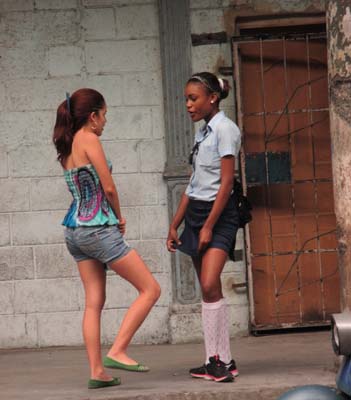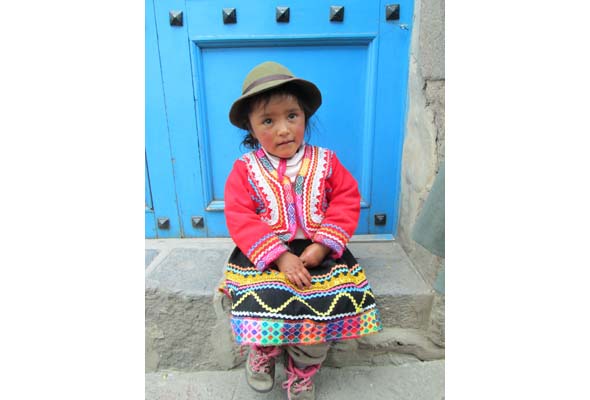Now that Cuba and the United States are engaged in talks aimed at normalizing relations, what changes are in store for the socialist experience there? In particular, how will possible changes affect Cuba’s children?
This March, I visited Havana for the first time in three years and looked for some answers. I have been visiting Havana and nearby Santa Clara and Cienfiegos for the past 15 years, sometimes twice a year. I have gone to visit friends I met on my trips, some through the synagogues, neighbours of friends, and doctors I met because of knee problems.
I was curious to see if anything had changed, especially for the children. The quick answer is “Not much!” What concerns me is that the expected return of American cultural and economic forces will lead to an erosion of the social safety net. I fear the American influence will grind down the two great benefits socialist Cuba bestows on its children: free health and dental care and free education, including university for those who meet academic standards.
Every Cuban child is entitled to attend school, and they receive a uniform and pair of shoes. They are served one meal at school, albeit rice and beans, and not of the best quality as I have heard from my young friends.
Infant mortality in Cuba – the number of deaths of infants under one year old per 1,000 live births – at 4.83 is marginally lower than Canada’s 4.85 score, according to the CIA World Factbook of January, 2012. This figure is frequently cited to indicate the effectiveness of a country’s healthcare system. There are excellent facilities for mothers-to-be and post-natal care. Cuban doctors are, in my opinion, excellent diagnosticians. This is probably because they don’t have a lot of fancy equipment for testing, nor do they have the variety of drugs available to us. This is in good part the result of the American economic boycott imposed in 1960 and extended in 1962.
So what does the future hold for the children of Cuba? I worry, not that the return of capitalism will bring back private business to Cuba, but that this will have little benefit for most Cubans because they simply do not have the means to open businesses themselves. And the government has no plans to subsidize private enterprise, but does impose stiff taxes.
Any Cuban with a relative in the US or who works with tourists is far better off than one who has no such connections. I have seen people lining up outside ATMs to withdraw money sent monthly from abroad.
As for those without connections:
The average monthly salary for a university graduate is about 20CUC a month. (One CUC is equal to 25 Cuban pesos. Although everyone is paid in Cuban pesos, I have provided the figures in CUC to simplify matters. One CUC is approximately equal to $1 US. This is the currency used by tourists.)
A 22-year-old who has no university education and works as a bookkeeper earns $12 a month.
A lawyer earns $20 a month.
A doctor earns $40 – $60 a month, depending on the particular clinic or hospital he or she is associated with.
An architect? $20.
These figures are based solely on conversations with these professionals.
So what do people live on? The government supplies a small monthly ration of oil, milk, and chicken, but meat, fish, and vegetables are very expensive for the average Cuban, usually out of reach.
Retirees receive a pension of $8 a month and, from what I am told, do not eat well.
A Cuban child can expect to grow up with a roof over her head, often in crowded apartments, with enough food, but not always of the best quality and variety. Meat and fish are expensive —chicken is $2.50 a kilo, which for most Cubans is a luxury, and vegetables at outdoor markets are also expensive for Cubans.
Most children depend on a meager diet based on rice, beans, some eggs, and lots of sugar, which is in everything. Pastries are cheap. Cubans love their sugar. Of course, when the Russians were a commanding influence, sugar cane became the main export for Cuba, and all other crops suffered. Fertile fields that used to grow a variety of crops were planted with sugar cane, and Cuba’s once-varied agriculture became a monoculture.
Speaking of culture, Cuban children are exposed to the arts from an early age and lessons of every type are encouraged and inexpensive.
Little girls in ballet tutus are seen everywhere in Havana, and piano music can be heard on the street wafting out of the studios.
I have not seen children’s art classes but I know they exist and there are thousands of paintings for sale in the artisan markets in Old Havana and near the Parque Central, the central square.
Are the children of Cuba happy? My opinion is that they are happier than children elsewhere. Families are very close, partly because they live in close quarters. You will often find children sharing a bedroom with their parents.
Even though toys are expensive, imported from China and of the worst quality, children there are not hooked on electronic devices. They play outdoors in the pleasant weather. Since they have little to covet from their peers, bullying doesn’t seem to exist.
This is not to say that children don’t need better quality food, toys, clothes, etc. This is why I encourage all visitors to Cuba to bring small new and used toys, dolls, new underwear to give out to people in Havana.
I recommend my favourite community, Centro Sephardi, at E and 17th streets in Vedado (central Havana) – one of the three synagogues in Havana, led by Dr. Mayra Levy, who makes sure the children in her community and others in the neighbourhood receive gifts from the missions that arrive from Canada and the US.
Pens are always much appreciated. (The cost of one pen is equal to 1/20th of their salary.) Stickers are adored by children of all ages. School supplies are always welcome, especially if you can make contact with a teacher or a principal. Notebooks are in very short supply and expensive. Coloured pencils make a wonderful gift.
How has Cuba changed? Many small businesses have opened up outside people’s homes. Cubans are selling whatever they can get their hands on –from second-hand pots and pans to Cuban jewelry. Some have opened small coffee shops. The government demands its share in taxes, but in the new, emerging Cuba, small private enterprise is tolerated.
We can always hope that as the Americans move in and bilateral relations improve, the average Cuban will benefit. But until the Cuban government raises the salaries of its citizens across the board, little will change for the people of Cuba.










Be the first to comment on "Travel: What’s in store for the children of Cuba?"